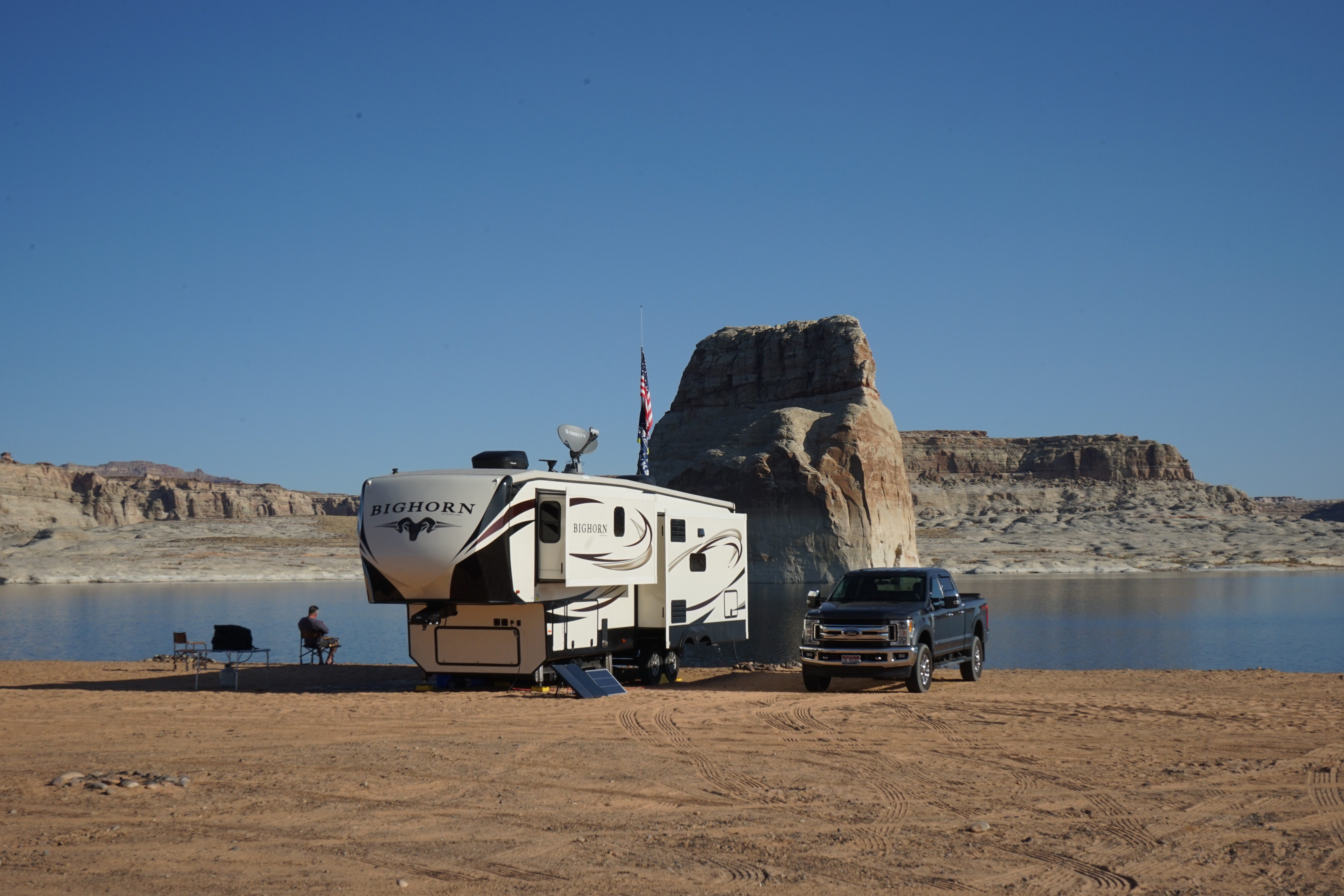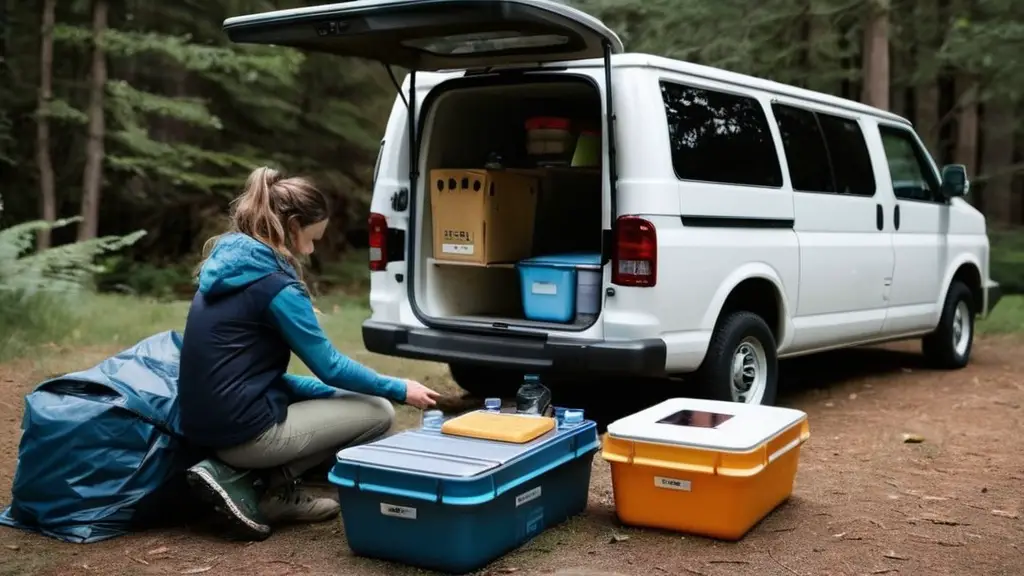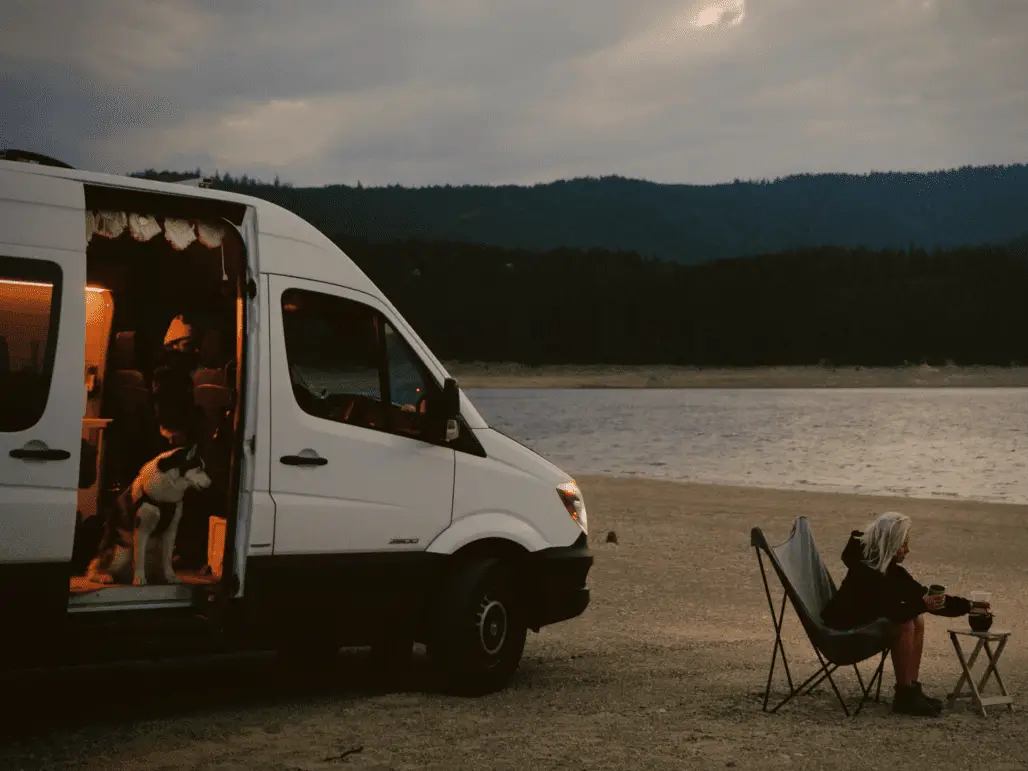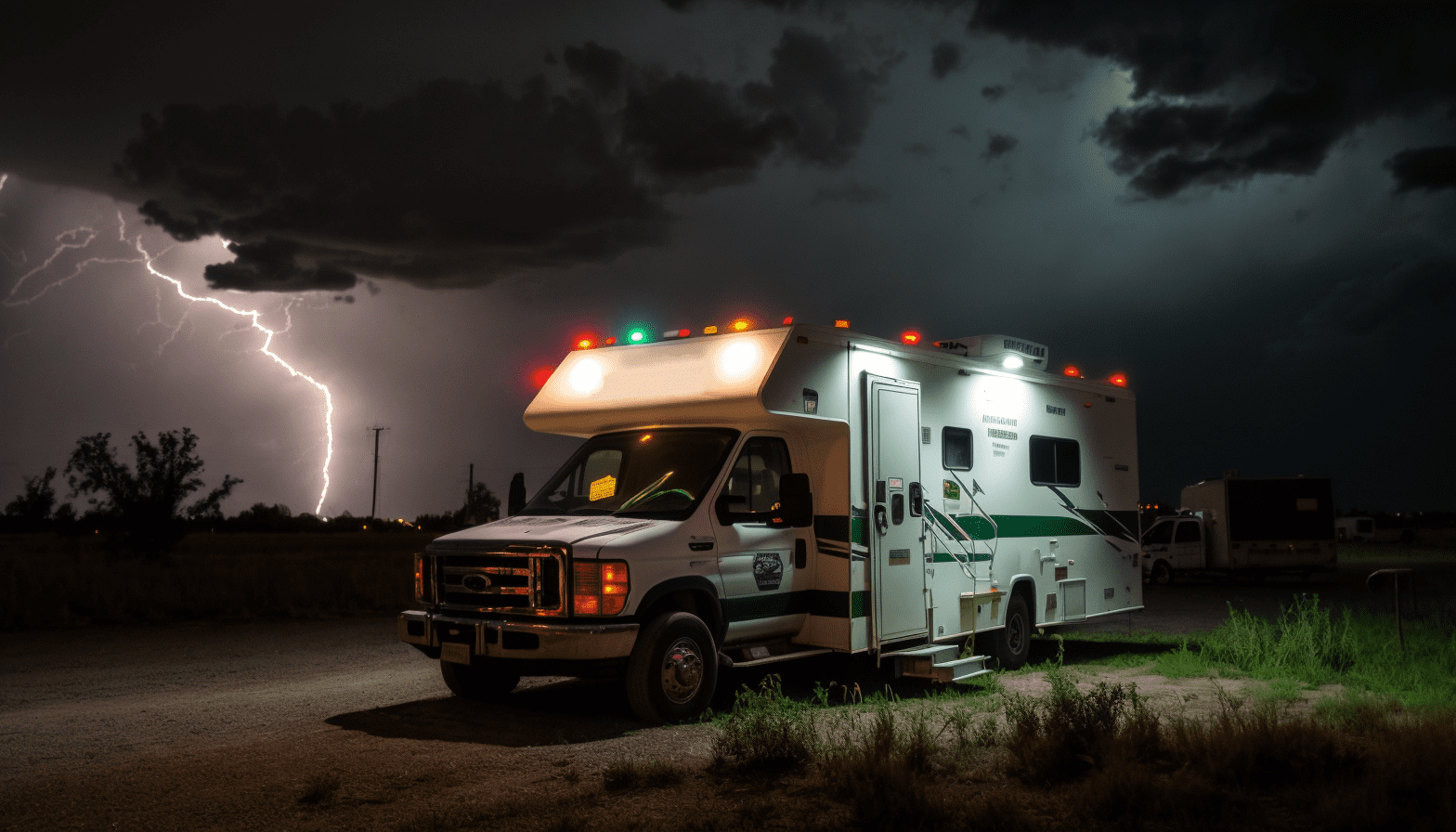Have you ever dreamt of living in an RV and being able to go where you want, when you want? When most people think of RVs, they envisage going to campsites with full amenities. But what if I told you there’s a way to save more money and explore beyond the traditional camping spots?
Boondocking (also known as dry camping) is exactly the solution you need! Boondocking allows adventurers like yourself to visit unique places free of charge and without any amenities.
If you’re interested in how to boondock, but don’t know where to start – this article should give you some boondocking tips on how to get started.
How To Boondock – Helpful Steps
Review the RV Camper Basics
- Check the weather: If you are traveling without a heater or air conditioner, the high and low temperatures should be considered. Nothing can ruin your boondocking adventure like sweltering in your camper, or freezing while trying to sleep.
- Familiarize yourself with the area you’ll be boondocking in and any relevant regulations or restrictions: Before setting out on a boondocking trip, research the area where you’ll be staying. This includes familiarizing yourself with the local terrain, climate, and any relevant regulations or restrictions. Some areas may have specific rules or regulations regarding overnight camping, so you should gain an understanding of these before you arrive. It’s also a good idea to research the availability of potable water and waste disposal facilities in the area, so you can plan accordingly. By familiarizing yourself with the area in advance, you can ensure that you have a safe and enjoyable boondocking experience.
- Verify that your RV’s battery, water and waste systems are in good working order: Before setting out for a boondocking trip, it’s important to make sure that your RV’s essential systems are functioning properly. This includes checking the battery to ensure it’s fully charged and in good condition, and making sure the water pump is working and there are no leaks in the water system. You should also check that the gray tank and black tanks are empty and that the sewer hose and connections are in good condition. If any of these systems are not functioning properly, it’s important to address the issue before you set out, as you will be relying on these systems while boondocking and may not have access to hookups for water, waste, or electricity.
- Make sure you have enough fuel, water and provisions for the planned trip: When boondocking, you’ll be relying on your own supplies and won’t have access to external sources of fuel, drinking water, or food. It’s important to make sure you have enough of these essential supplies to last for the duration of your trip. Make sure you fill up your fuel tank. Bring in enough potable water for drinking, cooking, and washing, and stock up on non-perishable food items. It’s not a bad idea to bring a water filter or purification system in case you need to source water from a nearby stream or lake. Having an adequate supply of these essentials will ensure that you have a safe and enjoyable boondocking experience.
- Ensure tire pressure and brakes are checked and adjusted if necessary: Before embarking on a boondocking trip in your RV, make sure that your vehicle is roadworthy and safe to drive. This includes checking the tire pressure and making sure it’s at the recommended level, as well as checking the brakes to ensure they are functioning properly. If you have to drive on rough or unpaved roads to reach your boondocking destination, check your tires for proper inflation and condition. Neglecting tire maintenance can lead to blowouts, which can be dangerous and potentially cause damage to your RV. By ensuring that your tires and brakes are in good condition before setting out, you’ll have peace of mind knowing that your RV is safe to drive and ready for the road.
- Make sure all lights and signals are functioning properly: Check that all the lights and signals on your RV are functioning properly before setting out on a boondocking trip. This includes the headlights, taillights, brake lights, turn signals, and emergency flashers. Proper lighting is crucial for safe driving and visibility, especially in low-light conditions or when navigating remote areas. By making sure all the lights and signals are functioning before you set out, you can avoid potential hazards and ensure a safe and smooth trip.
- Plan your route and have a backup plan: Before setting out on a boondocking trip, lay out your route and have a backup plan in case of unexpected circumstances. This includes knowing the distance to your destination, potential road closures or detours, and any other potential obstacles you may encounter. Always have a backup plan for overnight camping, in case your intended boondocking location is full or unavailable.
- Make sure your RV is equipped with essential safety and maintenance items: Before setting out on a boondocking trip, make sure your RV is equipped with the essential safety and maintenance items you’ll need. This includes items such as a fire extinguisher, smoke and carbon monoxide detectors, a first-aid kit, and tools for basic repairs. It’s also a good idea to have spare fuses, light bulbs, and other easily replaceable items in case of failure. By having these items on hand, you’ll be prepared in case of an emergency or unexpected maintenance issue.
- Check and fill your RV’s water tanks and propane supply: Before setting out on a boondocking trip, check and fill your RV’s water tanks and propane supply. This includes making sure that your fresh water tank is full, and that your grey tanks and black water tanks are empty. It’s also important to ensure that you have enough propane to last the entire trip, as you may not have access to a refill while boondocking.
- Review and test your RV’s electrical and plumbing systems, including solar panels and solar power: Before setting out on a boondocking trip, it’s important to review and test your RV’s electrical and plumbing systems, including the solar panels and solar power system. This includes checking that the battery and charging systems are functioning properly, the water pump is working, and all plumbing connections are secure. Estimate your gallons of water usage and add 20% to it. If your water tanks are not sufficient for your entire stay, consider a water bladder as a backup.
If your RV is equipped with solar panels, you should make sure they are functioning properly and generating enough power for your needs. You should also ensure that your onboard generator is in good working order and you have enough fuel to run it. By reviewing and testing these systems before setting out, you’ll be able to avoid unexpected breakdowns and ensure a comfortable and convenient boondocking experience, even when relying on solar power. - Pack food, supplies, and personal items for a self-sufficient boondocking experience: Before setting out on a boondocking trip, pack enough food, supplies, and personal items for a self-sufficient experience. This includes non-perishable food, cooking equipment, dishes, and utensils, as well as other supplies such as toilet paper, paper towels, paper plates, and cleaning supplies.
It’s also a good idea to bring along entertainment items, such as books, games, or a musical instrument. By packing these items, you’ll be prepared for a comfortable and enjoyable boondocking experience without the need to make frequent trips to town for supplies. - Prepare for emergencies and bring necessary safety equipment: Before setting out on a boondocking trip, prepare for emergencies and bring necessary safety equipment. This includes having a first-aid kit, fire extinguisher, and a communication device such as a phone or radio. You should also familiarize yourself with emergency procedures for your RV, such as shutting off the propane in case of a leak.
Bring along a map or GPS, and inform someone of your itinerary and expected return date. By preparing for emergencies and bringing necessary safety equipment, you can ensure that you are ready to handle unexpected situations while boondocking and have peace of mind while enjoying the outdoors.
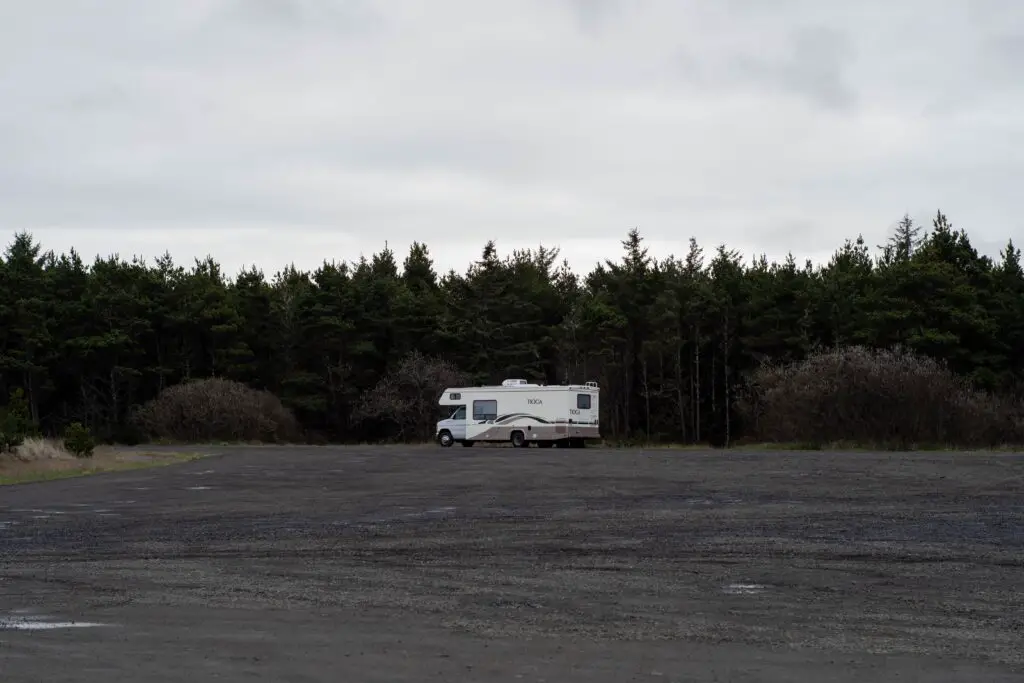
Where to Find Boondocking Spots
Finding a boondocking site can be a challenge, but with some research and preparation, you can find the perfect spot for your RV. Here are some tips on where to look for boondocking sites:
1. Public Lands: Many public lands offer free camping opportunities, including national forests, Bureau of Land Management (BLM) areas, and state parks. These sites often have no amenities, so you’ll need to bring your own water supply.
2. Online Resources: There are several websites that list boondocking sites, such as FreeCampsites.net and Boondockers Welcome. These sites provide detailed information about the location, amenities, and rules of each site. See the list below.
3. Social Media Groups: Joining RV-related Facebook groups and forums can be a great way to find boondocking sites. Members often share their experiences and provide tips on where to find the best spots.
4. Word of Mouth: Ask other RVers for recommendations on good boondocking sites. You may even be able to get directions from someone who has already been there.
Boondocking on Public Land
Public lands are lands owned by the federal government and managed by agencies such as the Bureau of Land Management (BLM) or the U.S. Forest Service (USFS). These lands are open to the public for recreational use and often offer free or low-cost camping options. Boondocking on public land can provide a more authentic outdoor experience and is an excellent alternative to traditional campgrounds.
Familiarize yourself with the rules and regulations of the public lands you’ll be visiting. The BLM and USFS have specific guidelines for boondocking on public lands, and it’s important to follow them to ensure a safe and enjoyable experience.
Overnight Stops for Boondocking
So, what if you are on your way to your chosen bookdocking spot, but need to stop for the night? Plenty of spots are available for your temporary dry camping. Try these ideas:
- Walmart Parking Lots: Many Walmart stores allow overnight boondocking in their lots. This can be a convenient and easy option for RVers who are looking for a safe and well-lit place to park for the night.
- Rest Areas: Most states have rest areas along their highways where RVers can park overnight. Some rest areas may have facilities such as restrooms and picnic tables, while others may be simply a place to park and rest.
- Truck Stops: Some truck stop gas stations, such as Flying J and Pilot, allow overnight RV parking in their lots. This can be a convenient option for RVers who are traveling on major highways and need a place to park overnight. They also have showers available.
- Cracker Barrel: Many Cracker Barrel restaurants allow overnight RV parking in their lots. This can be a great option for RVers who are looking for a safe and well-lit place to park for the night.
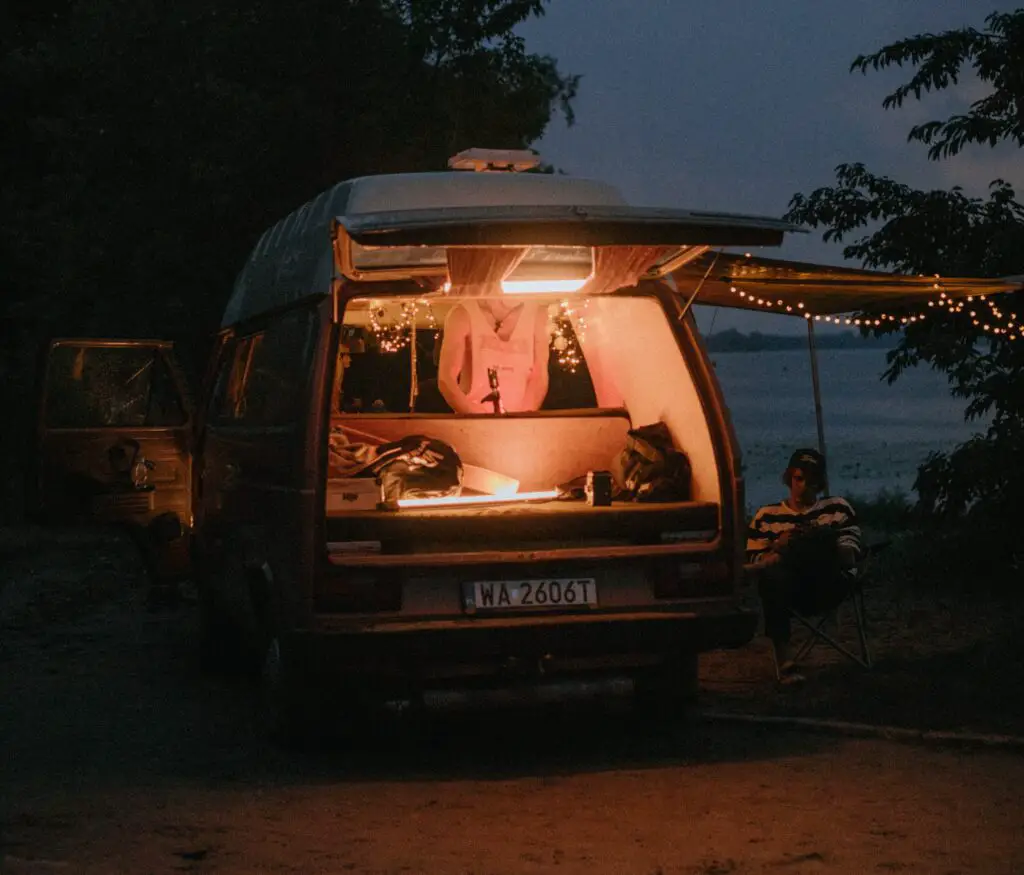
Boondocking Apps and Websites
Being a techno-nerd, I always have my smartphone or tablet with me and use these apps in advance of leaving home. These include the following:
Campendium
Campendium is a paid RV camping app with over 50,000 campground and boondocking locations in the US and Canada. It offers a database of locations with photos, user reviews, and detailed information about amenities. The app also includes a trip planning tool, weather information, and resources for dump stations, water sources, and propane locations. Campendium makes it easy to plan and enjoy camping trips.
Allstays App
Allstays is an RV travel app that offers a comprehensive database of campgrounds, RV parks, and boondocking locations in the US and Canada. It provides detailed information, user reviews, and the ability to search based on location, amenities, and RV type. The app also includes trip planning tools, weather information, and resources for dump stations, water sources, and propane locations. Allstays is a go-to app for RVers looking to plan and enjoy their next road trip.
Allstays also offers a paid version – Allstays Pro.
US Public Lands App
The US Public Lands App is a must-have for outdoor enthusiasts and RVers looking to explore the vast public lands of the United States. The app provides information on over 400 million acres of public lands, including National Parks, National Forests, Bureau of Land Management (BLM) lands, and more.
One of the key features of the US Public Lands App is its interactive map, which allows you to explore public lands and find great places to camp, hike, and enjoy the great outdoors. The map includes information about recreation sites, campgrounds, trails, and more, so you can easily plan your next adventure.
Another great feature of the US Public Lands App is its offline capabilities. You can download maps and information for a specific area, so you can access it even when you don’t have a cell signal. This makes it a great resource for boondocking and remote camping.
The US Public Lands App also provides important information about public lands, including regulations, rules, and guidelines for use. This information can help you ensure that you are following all the necessary rules and regulations and avoid any potential problems.
Boondockers Welcome
Boondockers Welcome is a unique RV travel app designed for boondocking enthusiasts who enjoy camping overnight on private property. The app connects RVers with private property owners who are willing to offer their land as a boondocking site.
One of the main benefits of the Boondockers Welcome app is the access to a large network of private boondocking locations. This opens up new opportunities for RVers to experience unique and off-the-beaten-path camping spots.
Another key feature of the Boondockers Welcome app is the ability to communicate directly with the property owner. RVers can send a request to stay, learn more about the property, and even read reviews from other Boondockers Welcome members who have stayed there before. This helps to build trust and ensure that everyone has a positive experience.
The Boondockers Welcome app also provides a wealth of information about boondocking, including tips and tricks for staying on private property, how to respect the environment and property owner, and information about RV etiquette.
Harvest Hosts
Harvest Hosts is a membership-based RV travel club that provides access to a network of unique and off-the-beaten-path camping locations. Members can stay overnight at participating wineries, breweries, farms, and other interesting locations for free.
One of the key features of Harvest Hosts is the opportunity to experience unique and unconventional camping locations. Members can enjoy a night under the stars surrounded by vineyards, sleep on a working farm, or park their RV at a brewery. This provides a unique and memorable travel experience that is far from typical RV park camping.
Another benefit of Harvest Hosts is the opportunity to connect with local communities and businesses. Members can learn about the area, meet new people, and support local businesses by purchasing products or services while they are there.
Harvest Hosts also provides a wealth of information and resources to help members plan and enjoy their trips. The website and app provide detailed information about each host location, including amenities, contact information, and rules and regulations. Members can also access a community forum to ask questions, share tips and experiences, and connect with other members.
Boondocking Safety
Safety is paramount and must be taken seriously. Before heading out, make sure to check in with a friend or local park ranger and let them know your plans. This includes where you’re camping and for how long.
When boondocking, there are a few major safety concerns to be aware of, including animals. Most boondocking areas in the U.S. are located in the West, which means predators like bears and mountain lions as well as elk and moose can be potential threats. As a visitor on territory that isn’t frequented by humans, it’s important to follow “bear aware” rules like securing food or cooking items behind locked doors and maintaining a respectful distance from large animals. Be especially diligent when you see animals with their young or during mating season. By following these safety tips, you can enjoy your time boondocking while staying safe!

